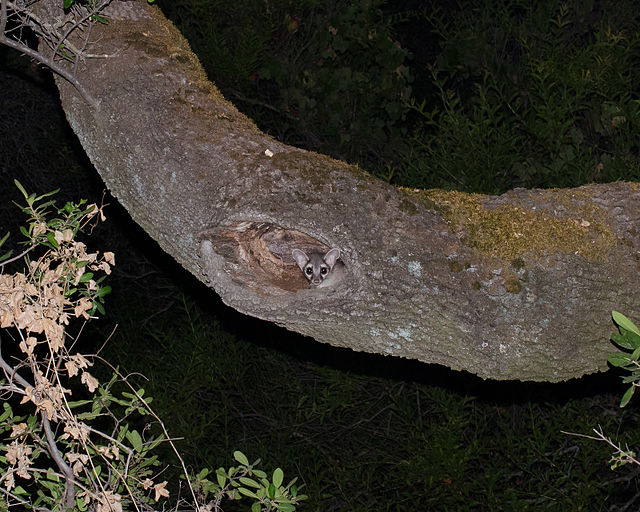|
Getting your Trinity Audio player ready...
|
The Ringtail (Bassariscus astutus)
This little critter, often mistaken for a cat, is actually a member of the raccoon family. North America’s procyonidae family includes the raccoon, ringtail, and coati. They are all nocturnal and excellent climbers who often rest in trees during the day.
With a hind foot that rotates 180°, the ringtail has impressive dexterity. Its scientific name means “clever little fox”, according to Wild Animals of North America by National Geographic Soc. Strictly nocturnal, the ringtail is rarely seen but is not uncommon.
Photo credit: Brooke Smith. This file is licensed under the Creative Commons Attribution 4.0 International license.
Where Ringtails Live
Ringtails are native to North America, primarily found in the southwestern United States and Mexico. They thrive in a variety of habitats, including rocky deserts, woodlands, and even some urban areas. States like Arizona, New Mexico, Texas, and parts of California are prime ringtail territory. In recent years they’ve moved into Kansas, Arkansas, and Louisiana, according to Wild Animals of North America by National Geographic Soc. These agile creatures love rocky environments where they can scamper up and down cliffs and hide in crevices. They’ve been around these parts for thousands of years, perfectly adapted to their environments. They can sometimes be seen sleeping in treetops, barely visible except for their dangling tails.
Photo credit: Thomas Quine. American Museum of Natural History, New York City. This file is licensed under the Creative Commons Attribution 2.0 Generic license.
Ringtail Diet
When it comes to food, ringtails are not picky eaters. They are omnivorous, which means they enjoy a varied diet. These nocturnal hunters feast on small mammals, birds, insects, and even fruits and nuts. Insects like grasshoppers and crickets are a particular favorite. They’re also known to raid nests for eggs and young birds. Thanks to their agility and excellent climbing skills, ringtails can catch prey in trees and on the ground, making them efficient hunters. Wild Animals of North America by National Geographic Soc says ringtails often ambush their pray and bite them on the neck to kill. Their diverse diet helps them adapt to different environments and food availability.
Raw chicken meat was used to collect photos, including this one of a ringtail, for a wildlife survey. Photo credit: Bureau of Land Management Oregon and Washington. This file is licensed under the Creative Commons Attribution 2.0 Generic license.
Ringtail Breeding Habits
Their breeding season typically occurs in spring, around February to May. After a gestation period of about 50-60 days, the female gives birth to a litter of two to four kittens. Tree trunks are a favorite nursery spot for birthing their babies. These babies are born blind and helpless, relying completely on their mother for the first few weeks. By the time they’re a few months old, they’re ready to start exploring and learning how to hunt. Mothers are very protective and nurturing, ensuring their young ones are well-prepared to survive on their own. The males do not play a role in helping with the young.

Photo credit: Daniel Neal. This file is licensed under the Creative Commons Attribution 2.0 Generic license.
Ringtail Aggression
Ringtails are not particularly aggressive. They are shy, solitary creatures that prefer to avoid conflicts whenever possible. When threatened, they rely on their agility to escape predators rather than fight. They can, however, be quite vocal, using a range of sounds to communicate with each other, especially during mating season or when a mother is protecting her young. Their primary defense mechanism is their ability to disappear quickly into narrow crevices and climb to safety.
Photo credit: Pixelfugue. This file is licensed under the Creative Commons Attribution 3.0 Unported license.
"Miner's Cat"
According to Wild Animals of North America by National Geographic Soc, the ringtail’s catlike features inspired miners to tame them as mousers. The nickname “miner’s cat” has stuck with ringtails since gold-rush days when prospectors tamed ringtails for company and to rid their camps of mice. The ringtail is smaller than a house cat and is the smallest North American animal in the Procyonidae family. Adult ringtails typically weigh between 1.5 to 3.3 pounds and have a body length of about 12 to 17 inches, with an additional tail length of around 12 to 17 inches. Reader’s Digest North American Wildlife says that in the southern part of their range, ringtails are known as “cacomistles”, a name derived from American Indian words for “half” and “mountain lion”.








